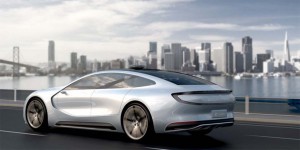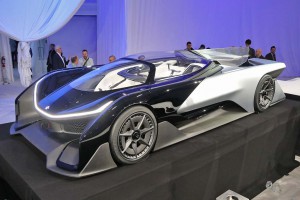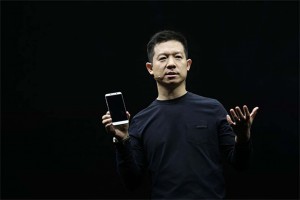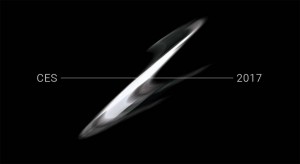Tesla Motors isn’t the only automotive upstart attempting to make news about electric and autonomous vehicles. Several potential competitors have their own, futuristic models to reveal – though, as Chinese-owned LeEco demonstrated Wednesday, there are plenty of pitfalls along the path.
With billionaire investor Jia Yueting on hand for a public unveiling in San Francisco, LeEco’s event went off the rails when the LeSee, its prototype autonomous electric vehicle, couldn’t drive down the runway, forcing Jia to run down the ramp on his own.
Jia, who made a fortune in the Chinese electronics industry, is clearly hoping to do better with a second automotive start-up he is funding, California-based Faraday Future. That company made its debut last January at the Consumer Electronics Show in Las Vegas, and will be back at the 2017 CES in less than three months to unveil its first production model.
The announcement about the Faraday debut and the short-circuited debut of the LeEco LeSee were dwarfed by headline-grabbing news from Silicon Valley’s Tesla Motors. Founder CEO Elon Musk late Wednesday revealed that all future models, starting with the Model 3 electric car set to debut next year, will be capable of operating in fully autonomous mode.
(For more on the Tesla autonomous vehicle announcement, Click Here.)
Autonomous vehicle technology has become something of a Holy Grail in the auto industry, automakers and auto regulators alike embracing the concept as a way to reduce crashes, improve fuel economy and ease traffic congestion on increasingly crowded roads.
Both Faraday Future and LeEco have embraced the concept in part, it would appear, because both have the hefty financial backing of Jia, who has often been referred to as China’s Steve Jobs.
The billionaire got a workout on Wednesday evening when he was forced to race down the runway at a San Francisco event that was supposed to reveal the new LeSee autonomous electric car. But the vehicle stubbornly refused to move.
“I shouldn’t be me running out here,” Jia acknowledged to the audience. The goal was to have him drive onto the stage, but when the LeSee prototype wouldn’t move, he added, “We didn’t have any other choice.”
Company officials later said the problem was caused by the late arrival of the concept vehicle from London, where it is being used in the latest installment of the Transformers film franchise.
(Tesla warns of slow Model 3 deliveries. For more, Click Here.)
Coincidentally or not, the LeSee prototype bears a strong visual similarity to the Tesla Model S and the smaller Model 3 that will go on sale sometime during the second half of 2017. But LeSee officials say they are putting an emphasis on using their new model in ride-sharing programs – another hot button shift in the transportation industry.
Taking the driver out of the equation would also give passengers the opportunity to spend their time looking at video screens inside the LeSee which, in turn, could be using content provided by Jia’s other business ventures.
During the debut of the LeSee, Jia was joined on stage by Marco Mattiacci, former head of the Ferrari Formula 1 program and now the chief brand and commercial officer for Faraday Future. They confirmed word sent out by Twitter feed that a production model will be revealed by that other electric vehicle company at the Consumer Electronics Show in Las Vegas this coming January.
In the tweet, the company said:
1. We founded a company. #FaradayFuture
2. We created a concept. #FFZERO1
3. We joined a race. #FormulaE
4. We unveil the future. #CES2017
That second point was a reference to the FF Zero1 show car that was introduced at the 2016 CES. A high-tech supercar, it was powered by a battery drive system, was said to be autonomous and also featured autonomous driving technology.
The actual production car Faraday is working on is believed to be more conventional in appearance, though it may adopt a more van or people-mover-like layout than that of a conventional sedan. As with LeSee, Faraday appears to be targeting a high-tech world in which motorists will have time on their hands while driving to either work, rest or be entertained.
The big question is whether both of the Chinese-funded companies will be able to translate their visions into successful companies. Tesla has become one of the most successful automotive start-ups in decades but is still struggling to get into the black and will need to generate several billion dollars more funding before the Model 3 debuts.
The substantial cost of bringing cars to market is a key reason, analysts this week said, why it appears that electronics giant Apple is backing away from its own automotive venture, Project Titan.
(Henrik Fisker wants back into battery-car business with new company. Click Here for more.)




